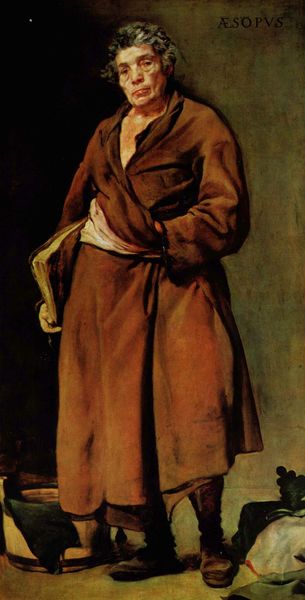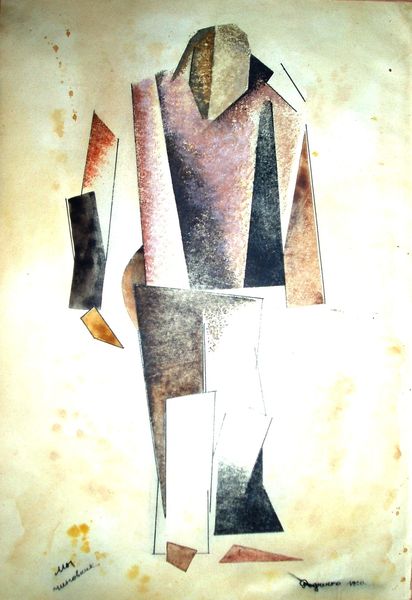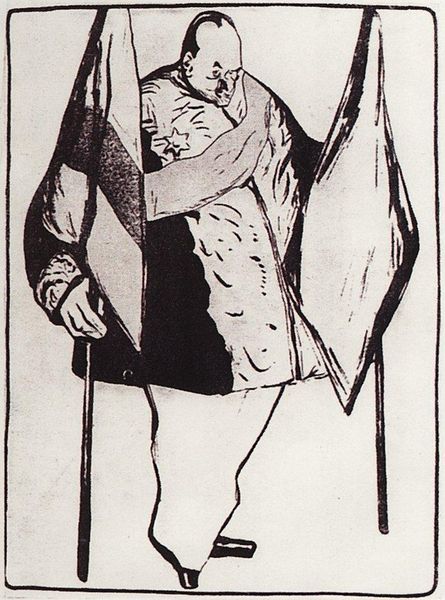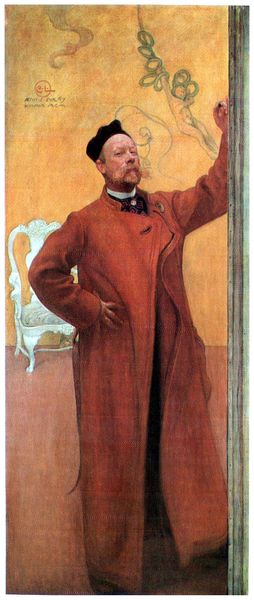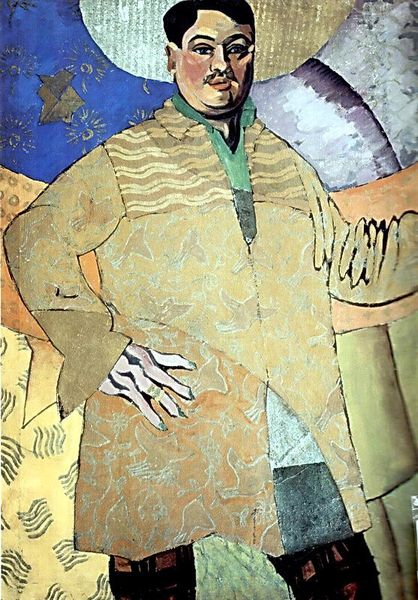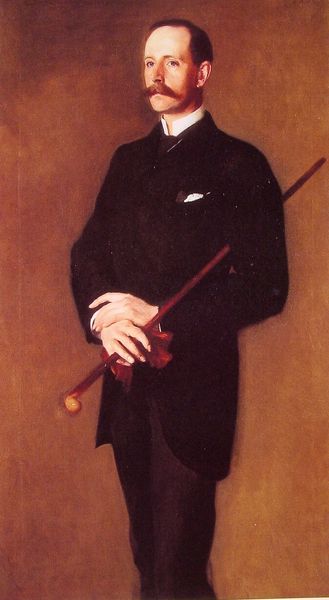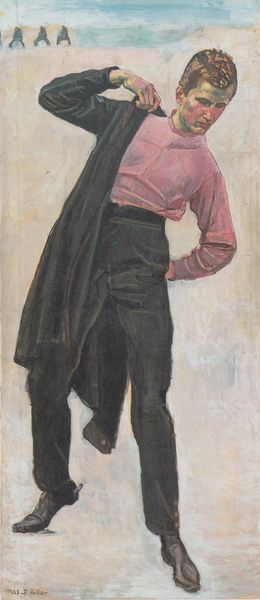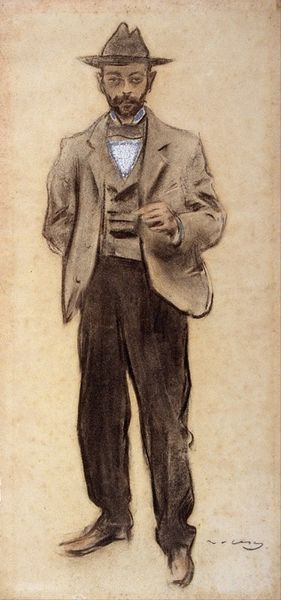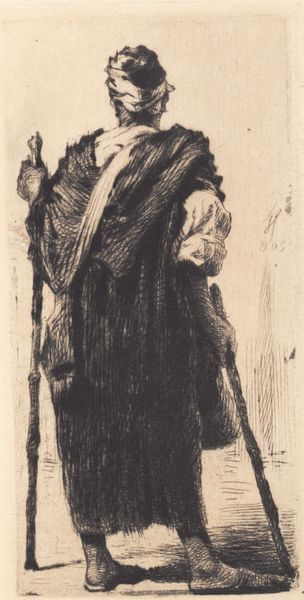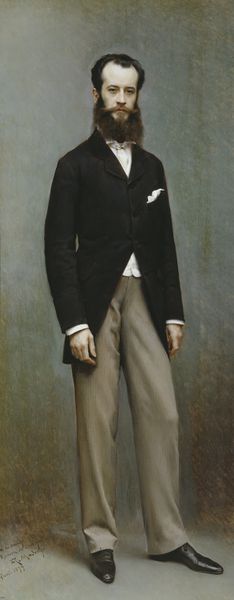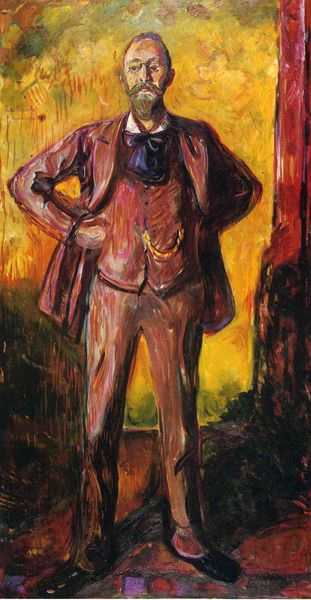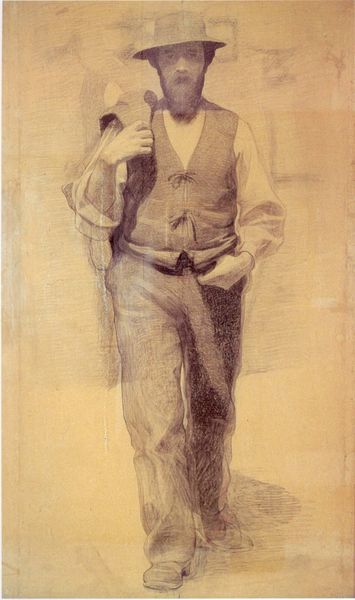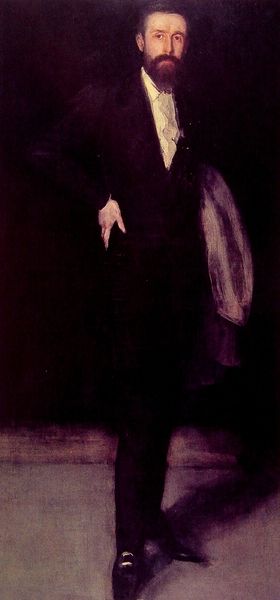
painting, oil-paint
#
portrait
#
painting
#
oil-paint
#
oil painting
#
genre-painting
#
modernism
#
realism
Copyright: Public domain
Editor: Here we have Tom Roberts' oil painting, "Professor G. W. L. Marshall-Hall," created in 1899. It feels very direct, almost confrontational, and I'm struck by the… the kind of raw texture of the background and the sitter’s attire. What catches your eye, in this piece? Curator: What immediately comes to mind is the sheer materiality of the painting. Look at the brushstrokes, almost frantic. The apparent lack of finish. Why this particular choice of oil paint and its application? It isn't merely to represent Professor Marshall-Hall; it's a statement about the production of art itself. How do you think that statement functions, especially considering this was painted at the dawn of the 20th century? Editor: Well, it seems like it's pushing against traditional portraiture, maybe emphasizing the act of *making* the painting, as opposed to just idealizing the subject? It feels like he wants you to notice the labor. Curator: Precisely. Roberts challenges the established social order through artistic process. This wasn't some noble lord or lady depicted, but an academic, in very ordinary, unglamorous garb. What kind of labor would create such texture in the backdrop? Is that canvas or wood panel? The ground seems to have been scrubbed to prepare the paint to sink inside. Editor: It does almost look like wood paneling! Maybe suggesting more humble settings than aristocratic society? So he's using these 'common' materials to… democratize the portrait? Curator: In a way, yes. He reframes who and how society values the labor of intellectual figures within a quickly- industrializing world. He elevates Marshall-Hall, yes, but questions at what cost through that very method. Editor: I see! I didn't initially see it as social commentary, but focusing on the materials and technique definitely opens up that perspective. Curator: It shows us that what appears as a simple portrait is, in reality, a layered examination of art production and its connection to cultural status in Australia at that moment.
Comments
No comments
Be the first to comment and join the conversation on the ultimate creative platform.
